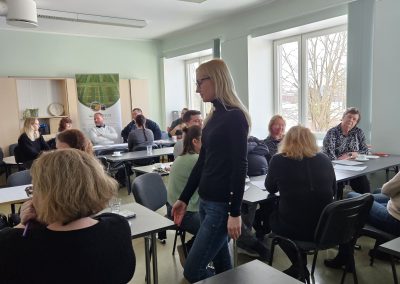Boreal region
The Boreal Biogeographic Region is the biogeographic region of Northern Europe that consists primarily of coniferous forests and wetlands.
The European Commission and the Council of Europe have defined the Boreal Region for the purpose of reporting on conservation efforts and results. The Boreal Region of the European Union includes much of the Baltic sea, the Baltic states of Estonia, Latvia and Lithuania, and most of Sweden and Finland. The biogeographic region extends eastward into Russia. Most of the land is below 500 metres (1,600 ft) and is fairly flat.

The north of the region merges into the forest and tundra of the Arctic Biogeographic Region, while the south merges into the deciduous forests of the Continental Biogeographic Region. In the west, the land rises into the Fennoscandia mountains, which are in the Alpine Biogeographic Region.
60% of the land in the European Union part of the region is covered by forest, but most of this is commercial plantings. Less than 5-10% of the forest is old growth. The typical western taiga forest contains Norway spruce (Picea abies) and Scots pine (Pinus sylvestris) growing on shallow soil covered in moss, lichen and ericaceous shrubs.
Petersen et al. in their 1995 review of Nordic rivers distinguish two biogeographic regions in the Fennoscandian Shield. Their Southern mixed forest rivers group in southeast Finland has short, low-gradient streams in mixed coniferous forest, connecting many clear or humic lakes, ponds, peat bogs and wetlands, which overlap the boreo-nemoral zone. The whole Neva River basin could be assigned to this region. The other region is their Boreal rivers group with “high-gradient streams in the coniferous and deciduous forests of the boreal vegetation zone.”
Estonia
Partner responsible: Eesti Maaulikool (EM)
Country Leader: Merrit Shanskiy
Contact: merrit.shanskiy@emu.ee
Experimental unit
Rõhu experimental station has been part of EMU since March 2007 when the experimental centre at Rõhu and the experimental station at Eerika were merged. Rõhu is EMU’ main base for field experiments. The activities of the station are mainly focusing on various agricultural field trials.
Rõhu has a total 60 ha of land, of which 36 ha are arable, 9 ha are under experiments (e.g. energy crops, apple-tree, grapes, etc.) and 15 ha is miscellaneous (e.g. buildings, road, hedges etc.)
For AGROSUS project our field experiments will be carried out at the experimental station and as a comparison at producers fields. The field experiments are carried out in organic and conventional agricultural systems of wheat, oat and apple orchard.
Pedoclimatic conditions
Type of soil: mainly Gleysols and Histosols
Mean annual T: 6.5 °C
Mean annual P: 702 mm
Key figures
Farming systems: 2 Conventional and 2 organic
Crops: Apple (P), Spring Oat (A) and Winter wheat (A)
Crop Link groups: 2
Co-creating workshop: 2
Co-validation workshops: 4
News related
Take a look at the Estonian co-creation workshop
AGROSUS partners from the Estonian University of Life Sciences had already held the co-creation workshop in their region.
AGROSUS launch a survey for farmers across the 11 biogeographical regions to select the best agroecological strategies
AGROSUS (AGRoecological strategies for SUStainable weed management in key European crops) is a four-year transdisciplinary research project. The project aims to identify appropriate tools and agroecological strategies to prevent and manage weeds in relevant crops, in...






